Karinto is a simple yet beloved traditional Japanese snack known for its crispy texture and rich sweetness. Though it may look humble at first glance, this deep-fried treat carries centuries of history and cultural significance. From temple offerings to modern-day souvenirs, karinto has remained a favorite across generations in Japan. In this article, we’ll take a closer look at how karinto became such an enduring part of Japanese life—so keep reading to discover what makes this sweet snack so special.
What is Karinto?
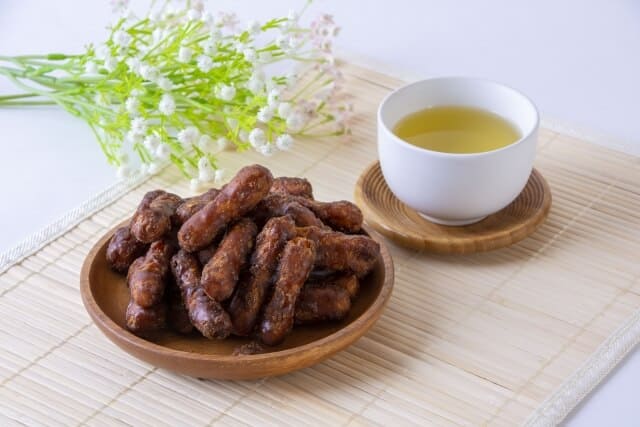
Karinto is a traditional Japanese sweet made primarily from flour and sugar. Known for its unique flavor and crunchy texture and loved by many people. Locals deep-fried it to a crispy texture and coated with a glossy layer of sugar syrup, giving it a sweet, crunchy, and slightly caramelized flavor. This sweets has ancient origins and deeply connected to Japanese food culture. There are subtle differences between regions due to traditional manufacturing methods and the selection of ingredients.
Etymology

The name Karinto has several theories behind its origin. One idea links it to the snack’s crunchy texture and the sweetness of molasses, reflecting its ingredients and preparation. Historically, during the Edo period, similar sweets were referred to as karakudamono (唐菓子), meaning “Chinese sweets,” suggesting a possible foreign influence. Another theory suggests the name may have evolved from Kariita, meaning “locally made sweets.”
Karinto History
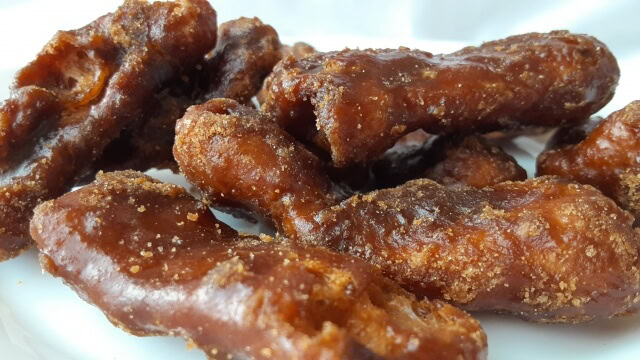
Karinto is a traditional Japanese sweet made by deep-frying wheat flour dough and coating it with brown or white sugar. Its origins are uncertain, with theories suggesting influences from Chinese confections brought during the Tang Dynasty, Chinese merchants in Nagasaki, or Portuguese traders in the 16th century. Though it may have existed in earlier forms during the Heian period, it evolved into its current fried form with the introduction of deep-frying techniques. This sweets gained popularity among commoners in the Edo period and became a beloved street snack. Its widespread appeal solidified in 1875 when a shop in Asakusa began selling it in its now-familiar stick form, helping establish it as an iconic and affordable Japanese treat.
Types and characteristics of karinto
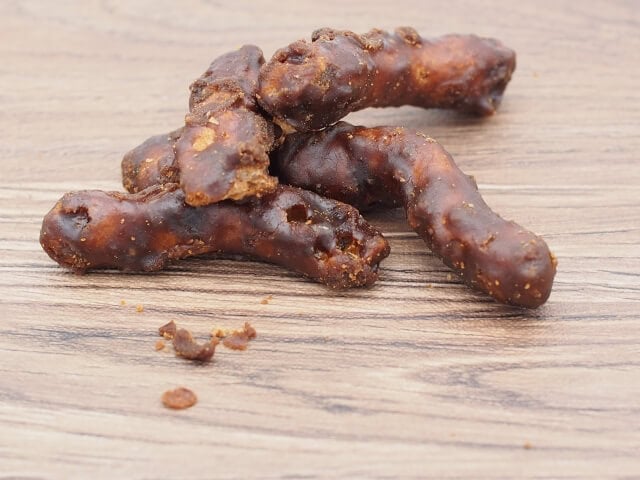
There are many different types of karinto, each with its own unique flavor and texture. Below are some of the most common types.
- Brown sugar karinto: Made using Okinawan brown sugar, it has a rich, deep sweet flavor.
- White sugar karinto: Made with white sugar, it has a lighter sweetness.
- Sesame Karinto: It contains sesame seeds, giving it a fragrant flavor.
- Honey and ginger: The gentle sweetness of honey stands out, creating a peaceful taste.
Karinto’s Modern Popularity
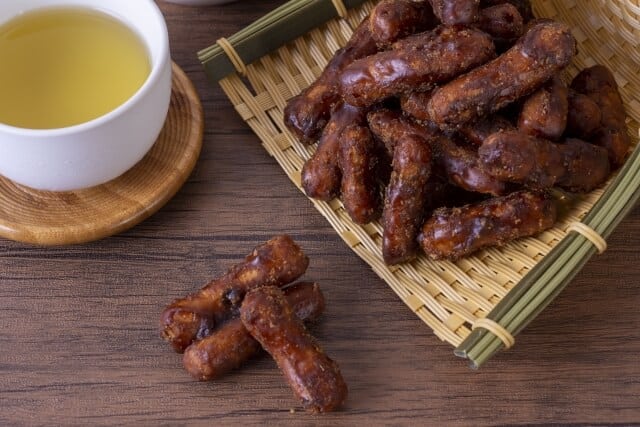
Today, karinto remains a popular snack in Japan and is widely available at convenience stores and supermarkets across the country. Major chains like Family Mart and 7-Eleven offer their own unique versions, often featuring eye-catching packaging. Supermarkets also carry locally made varieties using regional ingredients, giving consumers a wide range of choices. Additionally, karinto is a popular regional souvenir, with many tourist destinations offering versions made with local specialties, allowing visitors to enjoy the unique flavors of different areas.
Connection between Karinto and culture and events
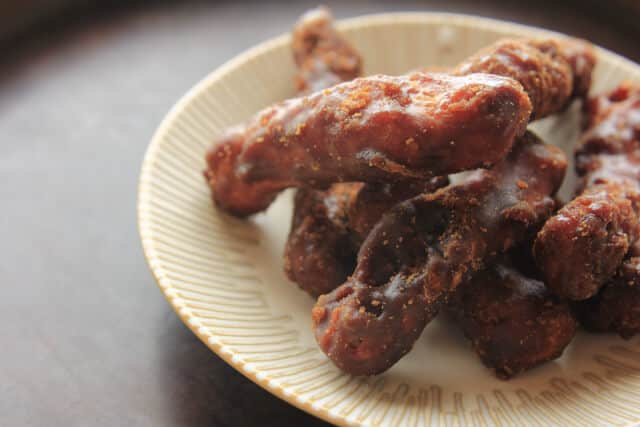
Karinto holds a special place in Japanese culture and traditional events. Commonly used as an offering during Buddhist rituals and shared during festivals and seasonal celebrations like New Year and Setsubun. Each region may also feature karinto in its own unique local events. Beyond its role in ceremonies, locals valued this sweets as a gift, especially during occasions like Respect for the Aged Day, midyear gift exchanges, and year-end gifting. Often considered a refined wagashi (Japanese sweet), locals presented this in elegant packaging—such as handmade paper or bamboo baskets—that reflects Japanese aesthetics and conveys thoughtfulness. Karinto’s deep cultural ties ensure its continued popularity in both festive and everyday settings.
Final Thoughts
Karinto may be small in size, but this sweets comes with history, tradition, and unmistakable flavor. Whether you come across it at a convenience store, a local festival, or as a beautifully wrapped gift, trying karinto is a delightful way to experience a piece of Japanese culture. If you ever visit Japan, be sure to pick some up—you might just find yourself hooked on this crispy, nostalgic treat.
If you enjoyed learning about karinto, you might also want to try other traditional Japanese snacks like senbei (rice crackers), yokan (sweet bean jelly), or manjū (steamed buns with filling) for a deeper taste of Japan’s rich snack culture.

 1 month ago
18
1 month ago
18



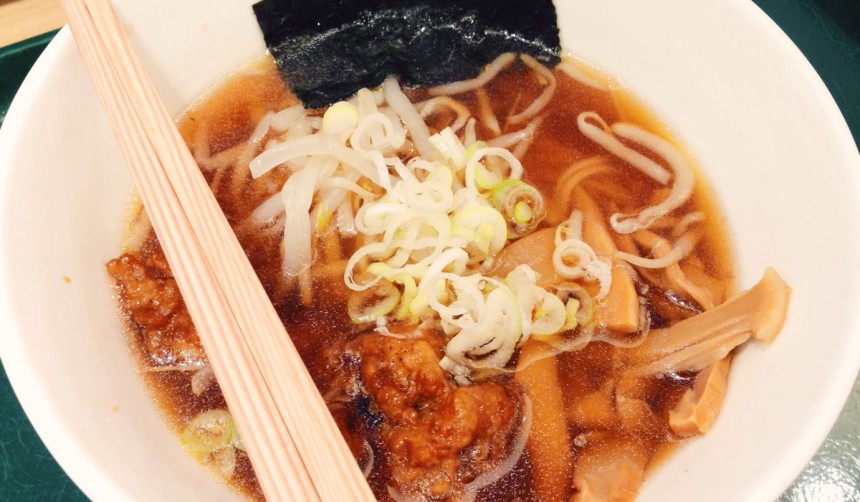






 English (US) ·
English (US) ·